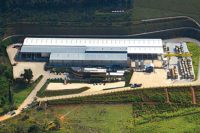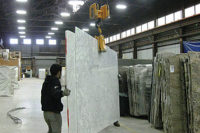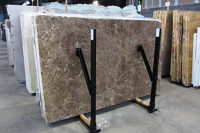When it comes to safety, education is a key component. The Marble Institute of America (MIA) promotes safety best practices in a number of ways, and it makes these resources available to the industry — whether a member or non-member of the association. These include Toolbox talks, DVDs, printed brochures, safety sessions held at local MIA chapters and seminars at trade shows.
In particular, working with slabs is an issue that is often discussed. We at Stone Worldalso believe this is an important topic that can never be discussed too much. For this reason, an article on “Slab handling safety” begins on page 36. We talked to fabricators, as well as a large distributor, to find out what procedures and equipment they have in place to run a safe operation.
“We have designated people that handle the slabs,” said Jonathan Mitnick, Chair of the MIA Safety Committee and Vice President of CCS Stone Inc. in Moonachie, NJ. “Those people are specifically trained in handling and staging the material for the cutters, as well as loading trucks and shipping containers. Our cutters are trained to move the slabs in the shop safely. Training comes in the form of regular safety meetings and experienced employees mentoring others.”
All the participants we spoke with hold regularly scheduled safety meetings to go over procedures when it comes to handling slabs. They also stressed the importance of checking slab handling equipment on a regular basis. Tony Malisani, former MIA President (2014) and owner of Malisani, Inc. in Great Falls, MT, explained his shop workers check equipment on a daily basis. “Broken, cut or torn equipment is replaced right away,” he said. “Twice a year we check the tools that are not used every day.”
Handling slabs properly is also important after a job leaves the shop. “Once materials go on the truck, there is a lot of opportunity for injury,” said Malisani. “Employees are encouraged to use lift gates, carts, ramps and lifters to minimize the amount of physical manipulation on the installations. There are new tools out there, carts, supports, lifting tools and slings that can help installers make moving materials much safer for transport.”
Others factors to consider when working on a jobsite are to make sure the appropriate amount of people are working on the project, to bring all the transport tools that might be needed and to make sure there is a clear path for moving the slab from the truck to the home or building.
Taking the appropriate measures to ensure safety in the workplace can prevent injuries and save lives. If you don’t adhere to safety best practices in your shop, take the time now to do so.




